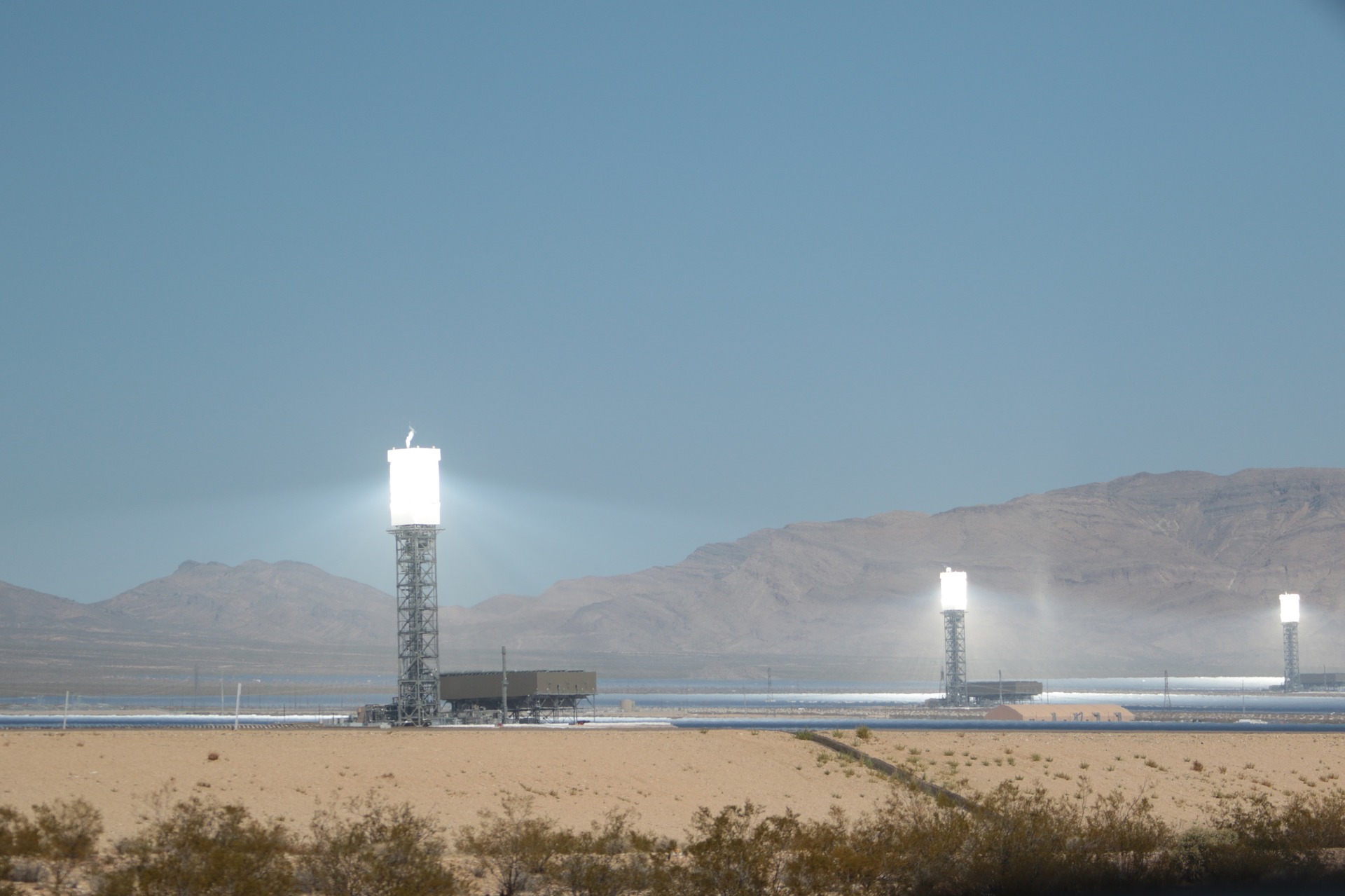Laptop and Maths for a Better Future: Generating Power with Sunlight
 Nuclear and coal-fired power have taken care of themselves. The world needs new, clean energy. But how can we design power plants that do without CO2 emissions and nuclear waste? And can mathematics and computers help answer this question? The answer is yes! In this workshop, students in small teams plan a solar power plant that generates energy with mirrors and solar radiation. If you enjoy mathematics, like working with computers and perhaps wonder how it can improve our future, then you've come to the right place!
Nuclear and coal-fired power have taken care of themselves. The world needs new, clean energy. But how can we design power plants that do without CO2 emissions and nuclear waste? And can mathematics and computers help answer this question? The answer is yes! In this workshop, students in small teams plan a solar power plant that generates energy with mirrors and solar radiation. If you enjoy mathematics, like working with computers and perhaps wonder how it can improve our future, then you've come to the right place!
The pupils get to know so-called Fresnel power plants. This is one of the innovative technologies that are being traded as future models for energy generation in sunny countries. The functioning of these power plants is relatively simple: mirrors reflect the sun's rays onto a pipe through which water is conducted. Heating the water turns it into steam, which drives an electricity-generating turbine. Since the position of the sun changes during the course of the day, the inclination angles of the mirrors must always be adjusted throughout the day.
The pupils deal with the question of how the power station should be constructed and operated in order to generate as much energy as possible. The pupils evaluate real data with the help of the simulation program with a graphical feedback and train technical competences in the areas of trigonometry and functions.
The workshop was developed in cooperation with scientists from industry and RWTH Aachen University who are researching the development and optimization of Fresnel power plants.
This module is recommended for classes of the intermediate level, which deal with angles and trigonometric functions at the time of the CAMMP day. Thus the module serves as a supplement to the lessons. However, the module can also be carried out without the treatment of trigonometric functions.
Duration: from 4 hours (incl. lunch break)
Contents: Geometry, trigonometry, angular relations in the triangle
Previous knowledge: Angle pairs
Target group: 8th grade and older
Created by: Martin Frank, Philipp Otte, Pascal Richter, Christina Roeckerath
Registration: Appointments can be made individually by e-mail at KIT or RWTH Aachen University.
Source of the image: https://pixabay.com/de/photos/solarstrom-california-solar-strom-1742186/
Material
The interactive learning material can be accessed via the online platform workshops.cammp.online. How to create an account on the platform and use the
material is explained in this video. In addition, accompanying material is provided for teachers on the online platform, which can be accessed via a password that can be requested by e-mail.
List of publications and talks to this modul:
-
Hoeffer, K.: Entwicklung von Unterrichtsmaterial zum Thema Solarenergie im Rahmen eines interdisziplinären mathematischen Modellierungsprojektes, Bachelorarbeit, KIT, 2020.
-
Schönbrodt, S.: Solarenergieforschung mit Schüler/innen im Rahmen eines computergestützten Projekttages - Optimierung der Spiegel in einem Fresnelkraftwerk (Sek I/II) (presentation), ISTRON-Tagung, Berlin, 2019.
-
Hattebuhr, M.: Komplexe Modellierung: Solarenergieforschung mit GeoGebra (workshop), ISTRON-Tagung, Hamburg, 2017.
-
Frank, M.; Roeckerath, C.; Hattebuhr, M.:Komplexe Modellierung: Solarenergieforschung mit GeoGebra, GDM-Tagung, Potsdam, 2017.
-
Krahforst, C: Didaktisch-methodische Weiterentwicklung des CAMMP day Moduls Spiegelaufstellung in einem Solarkraftwerk für den Einsatz in der Mittelstufe, Schriftliche Hausarbeit im Rahmen der Ersten Staatsprüfung, dem Landesprüfungsamt für Erste Staatsprüfungen für Lehrämter an Schulen, 2016.
-
Frank, M.; Roeckerath, C.; Hattebuhr, M.: Optimierung der Spiegel in einem Solarkraftwerk – Projekttag des EducationLabs CAMMP der RWTH Aachen, (presentation), GDM-Tagung, Basel, 2015.
-
Roeckerath, C.: Mathematische Modellierung der Spiegel eines solarthermischen Kraftwerks im Rahmen einer Modellierungswoche und einer Projektwoche in der Sek. II, Schriftliche Hausarbeit im Rahmen der Zweiten Staatsprüfung für das Lehramt an Gymnasien und Gesamtschulen, 2012.
